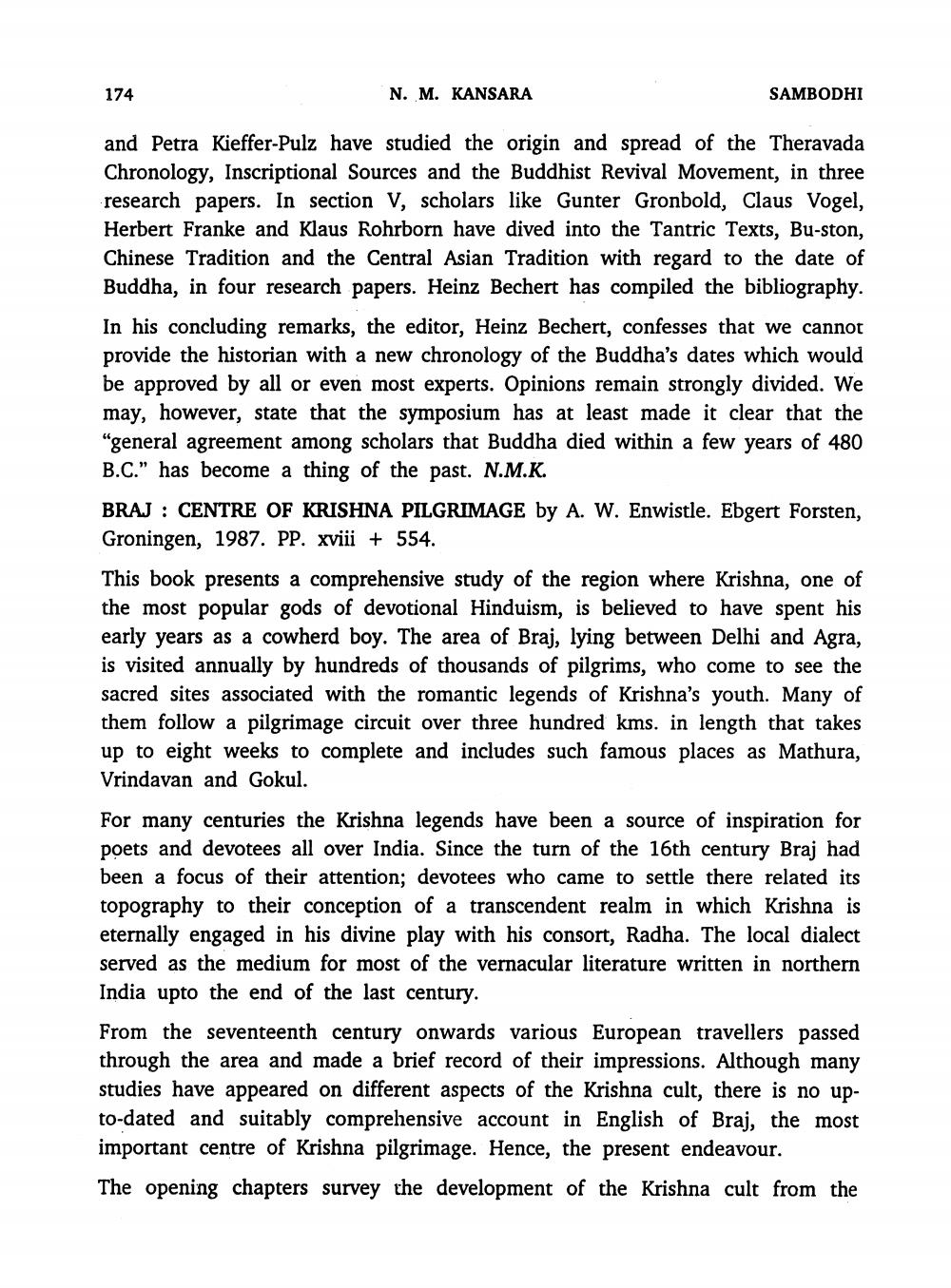________________
174
N. M. KANSARA
SAMBODHI
and Petra Kieffer-Pulz have studied the origin and spread of the Theravada Chronology, Inscriptional Sources and the Buddhist Revival Movement, in three research papers. In section V, scholars like Gunter Gronbold, Claus Vogel, Herbert Franke and Klaus Rohrborn have dived into the Tantric Texts, Bu-ston, Chinese Tradition and the Central Asian Tradition with regard to the date of Buddha, in four research papers. Heinz Bechert has compiled the bibliography. In his concluding remarks, the editor, Heinz Bechert, confesses that we cannot provide the historian with a new chronology of the Buddha's dates which would be approved by all or even most experts. Opinions remain strongly divided. We may, however, state that the symposium has at least made it clear that the "general agreement among scholars that Buddha died within a few years of 480 B.C." has become a thing of the past. N.M.K. BRAJ : CENTRE OF KRISHNA PILGRIMAGE by A. W. Enwistle. Ebgert Forsten, Groningen, 1987. PP. xviii + 554. This book presents a comprehensive study of the region where Krishna, one of the most popular gods of devotional Hinduism, is believed to have spent his early years as a cowherd boy. The area of Braj, lying between Delhi and Agra, is visited annually by hundreds of thousands of pilgrims, who come to see the sacred sites associated with the romantic legends of Krishna's youth. Many of them follow a pilgrimage circuit over three hundred kms. in length that takes up to eight weeks to complete and includes such famous places as Mathura, Vrindavan and Gokul.
For many centuries the Krishna legends have been a source of inspiration for poets and devotees all over India. Since the turn of the 16th century Braj had been a focus of their attention; devotees who came to settle there related its topography to their conception of a transcendent realm in which Krishna is eternally engaged in his divine play with his consort, Radha. The local dialect served as the medium for most of the vernacular literature written in northern India upto the end of the last century.
From the seventeenth century onwards various European travellers passed through the area and made a brief record of their impressions. Although many studies have appeared on different aspects of the Krishna cult, there is no upto-dated and suitably comprehensive account in English of Braj, the most important centre of Krishna pilgrimage. Hence, the present endeavour.
The opening chapters survey the development of the Krishna cult from the




